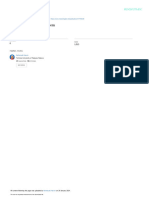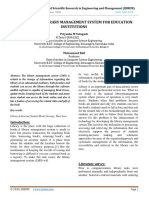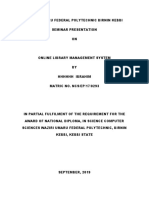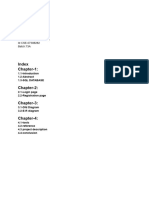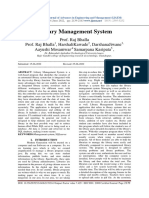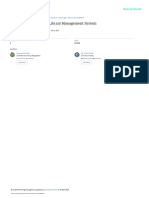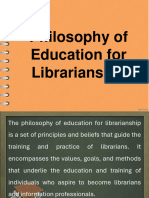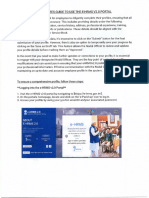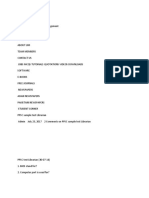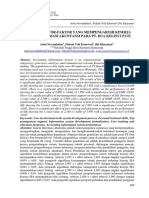0% found this document useful (0 votes)
43 views6 pagesLibrary Information Management System
The document discusses various types of library management systems, highlighting their importance in tracking library transactions and enhancing user experience. It reviews the evolution of these systems from manual record-keeping to automated solutions like KOHA and Capital's library software, while also addressing challenges faced by librarians, such as inadequate computer skills and resources. Solutions proposed include capacity building, digitization of resources, and the implementation of institutional policies to improve library services and access to information.
Uploaded by
muhindojulius15Copyright
© © All Rights Reserved
We take content rights seriously. If you suspect this is your content, claim it here.
Available Formats
Download as DOCX, PDF, TXT or read online on Scribd
0% found this document useful (0 votes)
43 views6 pagesLibrary Information Management System
The document discusses various types of library management systems, highlighting their importance in tracking library transactions and enhancing user experience. It reviews the evolution of these systems from manual record-keeping to automated solutions like KOHA and Capital's library software, while also addressing challenges faced by librarians, such as inadequate computer skills and resources. Solutions proposed include capacity building, digitization of resources, and the implementation of institutional policies to improve library services and access to information.
Uploaded by
muhindojulius15Copyright
© © All Rights Reserved
We take content rights seriously. If you suspect this is your content, claim it here.
Available Formats
Download as DOCX, PDF, TXT or read online on Scribd
/ 6







